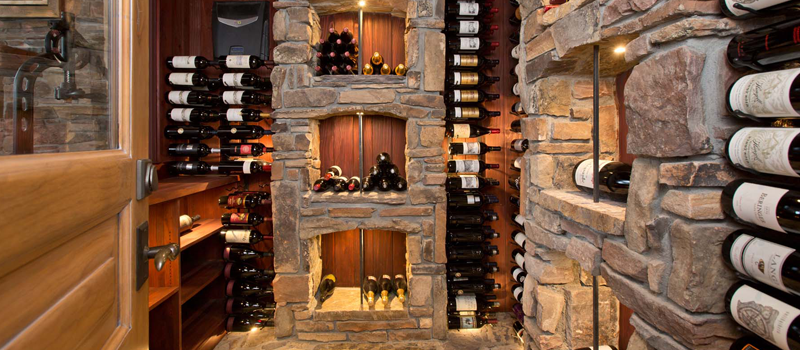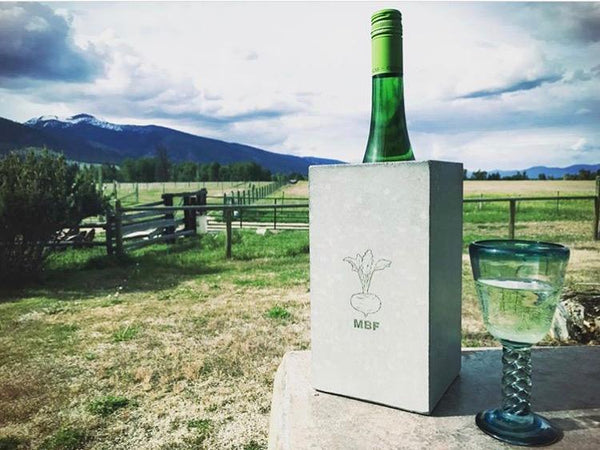Dialing in the Optimal Wine Temperature

No other alcohol is more reliant on proper storage than wine. With numerous different types of wine and too many clashing expert opinions to count, we at Angle 33 wanted to help you zero in on the optimal wine temperature. Prepare to blow away your party guests when your $12 bottle of wine is better than the fancy $25 dollar bottle someone else brought.
Here is a quick list of some different types of wine--from red to white, their individual wine storage temperature, and some details about why storing them the correct way is so important for taste and longevity:
Cabernet Sauvignon
The most popular wine variety in the world, Cabernet Sauvignon is popular because of its bold tannins and higher levels of alcohol. It’s a bold red that fits almost any occasion.
Storage Temperature: Keep it below 65 degrees fahrenheit
Storage tips: Cabernet Sauvignon is often so bold and full of tannins that it benefits from a longer storage period than some other wines, but storing at an optimal temperature and away from light are crucial the longer you store it. Too much heat can cause a loss of flavor or your wine might become “cooked” creating more of a stewed taste and aroma versus a fresh one.
Syrah
Syrah’s (or a shiraz if you hail from down under) themselves are as bold as cabernet sauvignons, if not more so, featuring notes of black pepper and meat. However, they boast such fruity flavors that some of the bite is cut down by the influence of fruits like blueberries and plums.

Storage Temperature: Keep it below 65 degrees fahrenheit
Storage Tips: Just like cabernet sauvignon, keeping a syrah in a cool, dry, and dim place is best for the flavor over longer periods of time. Syrah’s are made slowly and patiently, by vineyards high up on the hilltops that produce fewer but more concentrated grapes. It’s best to practice the same care and patience when storing this dinner party favorite.
Zinfandel
Zinfandel might be the most versatile red wine there is. An enticing array of fruits make up the main body of flavor, with subtle hints of sweet tobacco filling in the rest. With roots in Croatia, Italy, and here in the US, zinfandels blend seamlessly with just about any culinary style and all colors of meat.
Storage Temperature: Keep it below 65 degrees fahrenheit
Storage Tips: Find a cooler area than you would for most other red wines, as the blend of fruits create a delicate flavor that can quickly turn to cooked. Light is especially harmful to the flavor of a zinfandel, so the darker the better.
Pinot Noir
One of the lighter red wines, pinot noir is favored for its refreshing fruitiness and red-floral notes. Paired best with lighter or cured meats, this wine features higher acidity and softer tannins and has a flavor profile that justifies its cultural popularity.

Storage Temperature: Keep it below 60 degrees fahrenheit
Storage Tips: Keeping pinot noir out of direct sunlight is key. The fruity and floral flavors and fade quickly if exposed to light. Storing the bottle on its side is helpful for keeping the cork moist, and prepare to chill in a freezer for 20 minutes before serving!
Chardonnay
It’s probably the safest wine to offer at a party. Chardonnay is universally appreciated as a great wine because of its full body and fruity flavors, while being remarkably not too sweet for a white wine.
Storage Temperatures: Keep it below 60 degrees fahrenheit
Storage Tips: Chardonnay’s bold fruitiness make it one of the most fickle wines to store properly. If you plan to age an unopened bottle for awhile, a cool, dark space that sees little change in temperature is the best storage plan.
Pinot Grigio
Also known as pinot gris, pinot grigio is sweet, fruity wine that is popular all over the world. Citrus, combined notes of apple and pear are the most prominent flavors, and make this a fantastic pairing to light entrees such as salad and fish.

Storage Temperature: Keep it below 55 degrees fahrenheit
Storage Tips: Wines this light aren’t meant for long-term storage, but if you intend to keep a nice bottle for a couple months for a certain occasion just dry to keep it in the coolest part of your house.
Moscato
Possibly the world’s most popular dessert wine (though the moscato family has much more to offer), moscato is often a bubbly white wine with fantastic fruity sweetness and light floral notes. The perfect ending to any dinner party probably starts with clinking some glasses of moscato together for a toast.
Storage Temperature: Keep it below 55 degrees fahrenheit
Storage Tips: Moscato is another wine you shouldn’t feel tempted to age. If you don’t intend to drink a bottle soon after purchasing, keep in a dark, cool place for no more than six months. If you’re planning on tapping into it within the next couple weeks, your fridge will do fine!
Sparkling Wine
This is the genre of wine that features the most snobby of corrections. Not all sparkling wines are made the same. A common correction you may have heard is, “Actually, champagne is specific to a region in France.” Nevertheless, sparkling wine is the drink of choice at all the world’s most formal occasions, except maybe those hosted here in Missoula, where raising a glass of Cold Smoke is a more honored tradition.
Storage Temperature: Keep it below 50 degrees fahrenheit
Storage Tips: Storing sparkling wine long term can be more of a headache than it’s worth. They require nearly the same temperature at which your refrigerator is set. However, if exposed to the same temperature fluctuations as the contents of your refrigerator you’ll lose everything there is to love in a good bottle of sparkling wine.
And what about proper serving temperature?
Once you’ve decided it’s time to crack open a new bottle of wine there are some steps you should take to make sure it’s at its peak serving temperature. For almost any wine, a 20 minute visit to the freezer or letting it chill in your refrigerator for an hour or so before serving will make sure that first glass is absolute perfection. Further, you can keep them cool while they are out in a bucket of ice and water, or in a concrete wine thermal. The benefit of the concrete wine thermal is that you can keep it in the refrigerator or freezer while your wine cools so they keep the same temperature for longer.
What’s great about storing wine is that you don’t need a wine cellar or some fancy refrigerator. By keeping them in the coolest part of your house, and even within a closet where they aren’t exposed to light, you can age your red wine nicely for up to a year or more and store your white wines for a few months. Just don’t let the bubbly sit too long.
Leave a comment
Comments will be approved before showing up.
Also in News


